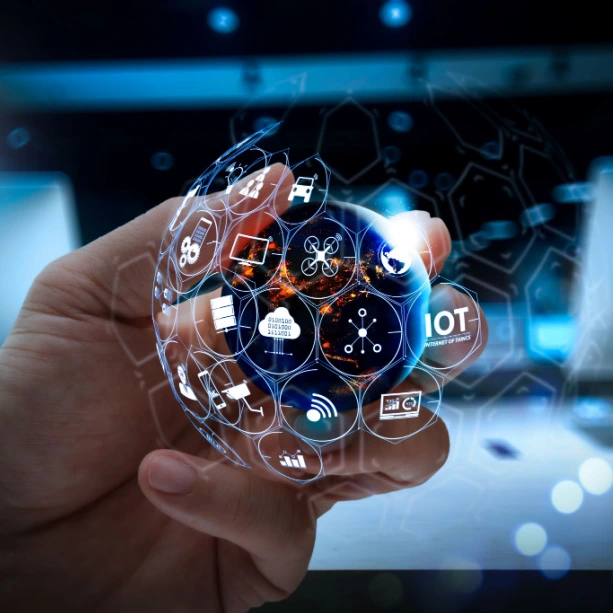The Internet of Things (IoT) is a technological umbrella broadly characterized by interconnectivity between physical devices via software connectivity. As one might suppose, this encompasses many similar technologies and can make it challenging to identify what technology is designed to provide the best IoT solution to a given problem. A proposed solution to this problem is to create more specified categories for IoT companies to illustrate their offerings better and the problems they can help solve. This proposed solution could also be applied to the widely-varied umbrella of sustainable technology.

5 Clouds of IoT: The Argument for IoT Classification
At the beginning of July, IoT For All featured an article introducing the five clouds of IoT. Seeking to address the lack of implicit specificity of the term "IoT," the article introduces a mechanism called "the five clouds of IoT." This mechanism divides IoT into five "clouds" based on the solution they offer and the problems they are attempting to solve: the device cloud, connectivity cloud, data cloud, application cloud, and development cloud. The article serves as a basic introduction to the idea's origins, presumably setting up more in-depth articles that will provide complete definitions for these clouds in the future.
But perhaps more importantly, this article draws attention to the fact that not all IoT is created equally. While the author highlights how IoT devices can be differentiated based on the problems they are attempting to solve, they can also be classified by how they are connected, what the device itself is, and the device's intelligence. Although there isn’t set terminology for these differentiations – which would no doubt be helpful for companies and consumers alike – much of this identity-establishing language is utilized in IoT-oriented discussions.
That does not mean that this language covers all its bases. The conventions for specific comparisons are present, but others are almost entirely absent. One strikingly absent conversation is that of sustainability classification.
Join the AirFinder Difference!
- Innovation. Organizations can be freed up to innovate and bring more impactful products and services to market.
- Profitability. Increased profitability provides new opportunities to innovate and improve valuation.
- Digital Transformation. Discover competitive advantages, new revenue opportunities, improved customer relationships, and increased efficiency.
Sustainability: An Overlooked Aspect of IoT Classification
As important as technology-oriented IoT classifications are, other classifications are just as important, if not more so. For example, is a given IoT device sustainable? Does the company behind the technology work to offset environmental impact? Does the technology itself have the ability to advance other sustainability efforts?
Often, IoT companies discuss their own sustainable technology without providing nuance, causing the phrase to fall into the same trap as “IoT.” That is to say, the phrase “sustainable technology” means so many different things that it’s hard to figure out what a company means when they call themselves “sustainable.”
Let’s take a closer look at different types of sustainable technology and how their sustainability differs.
Types of IoT Sustainability
Passively Sustainable IoT
Passively sustainable IoT refers to any device designed to reduce its own environmental impact. These devices are independently sustainable by virtue of their own design and function.
Some passive ways an IoT device’s design might contribute to sustainability is through reusable batteries, which reduce battery waste. This technology might also have energy-saving settings to further reduce environmental impact. Material is also a significant component of making an IoT device passively sustainable, as these designs prioritize renewability and durability wherever possible.
Actively Sustainable IoT
Often, actively sustainable IoT is also passively sustainable, but it also goes beyond just a sustainable design and function. Instead, actively sustainable IoT can be employed to advance sustainability in other ways, providing additional value to environmental efforts.
Some functions that actively sustainable IoT might have include:
- Monitoring air quality
- Monitoring water quality
- Enabling strategic waste disposal
- Reducing energy consumption
- Temperature monitoring
- Identifying optimized travel routes
The Importance of Actively Sustainable Asset Tracking
The importance of sustainable IoT as a whole cannot be overstated. However, actively sustainable IoT provides unique opportunities to not just make technology better for the environment, but to better the environment through technology. Actively sustainable asset tracking, in particular, has a number of use cases that can help promote a company’s sustainability goals in a variety of ways.
Some examples include:
Cold-Chain Monitoring
Food waste results in overflowing landfills and an increase in carbon emissions; it also requires the production of more food to make up for the loss, which can lead to damage from over-cultivation. What many people don’t realize, however, is that most food waste occurs before the product even makes it to the store.
Cold-chain monitoring helps reduce this in-transit waste by providing a method of tracking both a product’s location on the road and its current temperature, ensuring its timely arrival and maintained quality.
Waste Monitoring
Waste is a natural byproduct of the production process, but excessive waste can result in overfilled landfills and the need to create more of the material, creating a repeating cycle of production and increased waste.
Waste monitoring allows companies to keep track of their waste production, allowing them to detect unexpected upticks that might indicate a recurring production error. It also ensures that scrap material being saved for later use isn’t disposed of and that recyclable material ends up in the correct receptacle.
Paperless WIP/Inventory Tracking
Beyond concerns of waste and wasted materials, one might not expect that WIP and inventory tracking creates an issue of sustainability. Indeed the environmental impact comes more from common tracking methods than anything else, as companies often use paper data sheets to keep track of a product’s stage in the production process.
With technology-based asset tracking, WIP and inventory information is made digital, eliminating the need to use paper. It also creates similar benefits to waste monitoring, by ensuring material is properly used and not accidentally disposed of.
Active Sustainability, Passive Sustainability, and Link Labs
Link Labs promotes a variety of use cases that exemplify the sustainable capabilities of our technology, including the cold-chain monitoring, waste monitoring, and paperless WIP/inventory tracking use cases outlined above.
Our technology also runs on both rechargeable batteries and long-lasting single-use batteries that can easily be recycled instead of thrown away. In this way, we provide a solution that is both actively and passively sustainable to help our customers meet their sustainability goals without breaking the bank.
Book a demo today to learn more about how our sustainable solution can work for you! .webp?width=1000&name=Sustainability_banner%20(1).webp)




